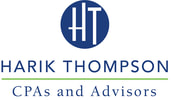|
A Simplified Employee Pension IRA was designed to encourage retirement benefits in businesses that would otherwise not set up employer-sponsored plans. Sole proprietors, partnerships and corporations — even S corporations — can establish SEPs. SEP IRAs can receive employer contributions but with a higher annual contribution limit than standard IRAs. Think of a SEP IRA as a traditional IRA that lets employer contributions be vested immediately. You may be eligible for a tax credit of up to $500 per year for each of the first three years for the cost of starting the plan. Administrative costs are low.
A SEP IRA is an attractive option for many business owners because it doesn't have many of the startup and operating costs of conventional employer-sponsored retirement plans. You can set up a SEP plan to contribute to your own retirement at higher levels than a traditional IRA allows. SEPs are treated like traditional IRAs for tax purposes and allow the same investment options. The same transfer and rollover rules that apply to traditional IRAs apply to SEPs. When you make contributions to SEP IRA accounts, you as the employer receive a tax deduction for the amount contributed. Additionally, the business is not locked into an annual contribution; decisions about whether and how much to contribute can change each year. With a SEP IRA, you don't need to make investment decisions; an IRA trustee determines eligible investments, and individual employee account owners make specific investment decisions. The trustee deposits contributions, sends annual statements and files all required documents with the IRS. Contributions cannot exceed the lesser of 25 percent of an employee's compensation for the year or $55,000. This is significantly higher than the limits imposed on standard IRAs. These limits apply to your total contributions to the plan and any other defined contribution plans — other SEP, 401(k), 403(b), profit-sharing or money purchase plans that you have. (Note that limits are often adjusted annually, so check the current numbers before making a decision.) Your business pays no taxes on the earnings on the investments. Generally, you don't have to file any documents with the government. Eligible employees must be at least 21 years of age and must have performed service for you in at least three of the last five years. All eligible employees must participate in the plan, including part-time and seasonal workers. Contributions for all participants generally must be uniform — for example, the same percentage of compensation. Also, your workers who are covered in a union agreement that bargains for retirement benefits may be excluded from participating in a SEP IRA, as may be nonresident aliens if they don't receive U.S. wages or other service compensation. In addition, you would not be required to cover employees who received less than $600 in compensation during the year — even if subject to cost-of-living adjustments. These are just the basics. There are other provisions and exceptions, and companies should work with a professional to get any kind of retirement plan launched. Those caveats aside, a SEP IRA could be a great deal for you and your company. You might choose a SEP because your industry is cyclical: In good years, you can make larger contributions for you employees; in down times, you can reduce the amount. The financial institution that you select to be the trustee for the SEP has several investment funds for your employees to choose from. Individual employees have the opportunity to divide their employer's contributions to SEP IRAs among the funds made available to employees. Your employees get retirement funds, and you get a happier, more loyal workforce. Comments are closed.
|
Newsletter articles are posted every 2 weeks. If you would like to have our e-newsletter delivered directly to your inbox, please sign up. Your information is confidential; you can unsubscribe at any time. Subscribe. Categories
All
|
Proudly powered by Weebly

 RSS Feed
RSS Feed